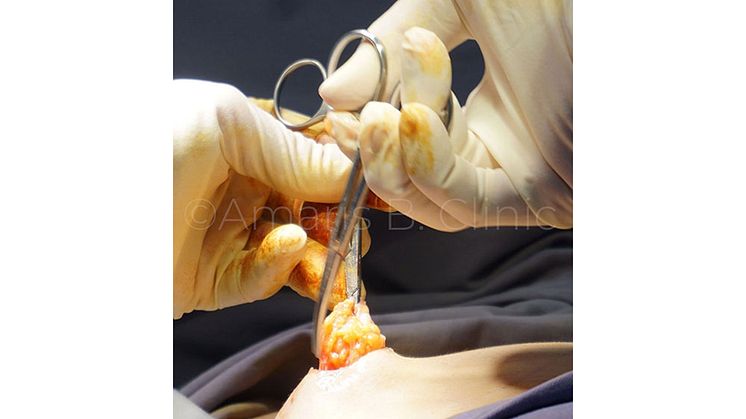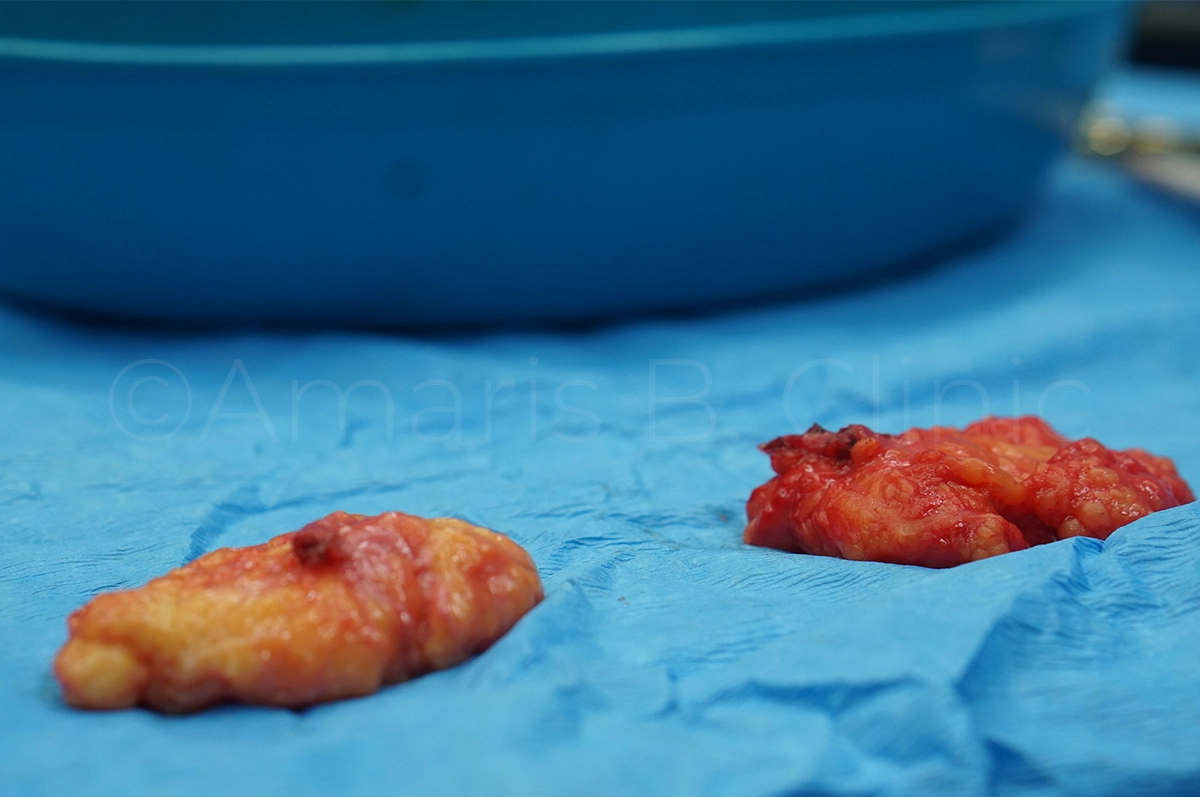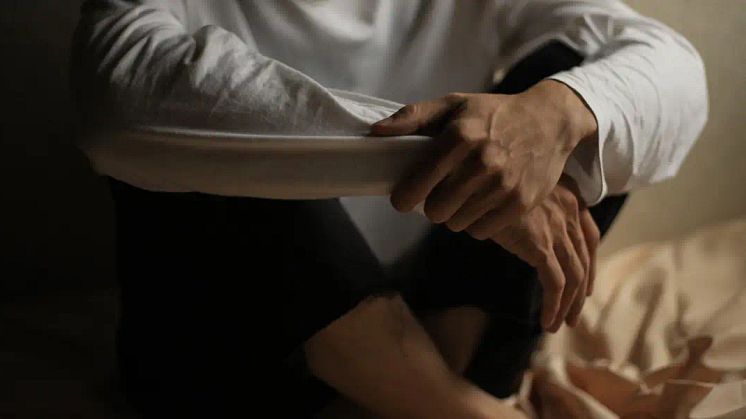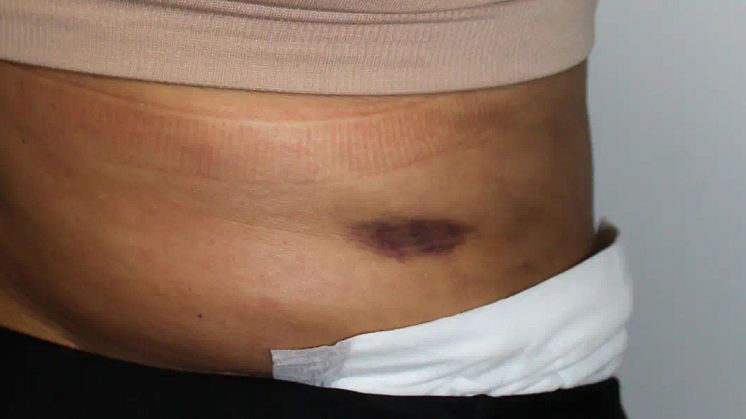
Blog post -
Can You Correct A Botched Gynecomastia Surgery?
Gynecomastia, most commonly known as man boobs, is a medical condition characterised by the enlargement of breast tissue in men. It can have a significant physical and psychological impact on them.
Gynecomastia Causes and Risks/Complications Factors
The development of gynecomastia is common during puberty due to hormonal fluctuations. Also, as men age, they may experience reduced testosterone levels (disrupting the oestrogen-testosterone balance), thus leading to gynecomastia. In some males, using anabolic steroids, often by bodybuilders, can also trigger gynecomastia. Certain underlying medical conditions such as liver cirrhosis, overactive thyroid, cancer of the pituitary glands, adrenal glands or testicles and the use of recreational drugs and medications such as antianxiety, antidepressants, steroids, digitalis and antiandrogens may also lead to the development of gynecomastia.
Given the diverse underlying causes of this medical condition, it is estimated that up to 70% of men may experience gynecomastia. The duration of gynecomastia may vary, with some, being temporary and occurring during the pubertal years, while others may persist for extended periods.
Psychological Impact of Gynecomastia
Studies have shown the profound psychological impact that gynecomastia has on male sufferers. It may cause embarrassment, self-consciousness and a decline in self-esteem, leading to social anxiety and body image issues.
"Male patients who suffer from gynecomastia avoid removing their shirt in the public setting, such as swimming or going to the gym, to avoid judgement or ridicule. In particular, adolescents with this medical condition experience increased psychological distress, as it coincides with heightened self-awareness and peer scrutiny," explains Dr Ivan Puah, who has been performing gynecomastia surgery for over 15 years in Singapore.
Gynecomastia Grades & Treatment Options

Gynecomastia is classified into different grades based on the severity of breast tissue enlargement.
Gynecomastia Grades:
- Grade I: Small Breast Enlargement without Excess Skin
- Grade II: Moderate Breast Enlargement without Excess Skin
- Grade III: Moderate Breast Enlargement with Excess Skin
- Grade IV: Significant Breast Enlargement with Excess Skin
The Federal Drug Administration (FDA) has not approved drugs specifically for treating this male breast disorder.
Gynecomastia Surgery (Male Breast Reduction)
In most cases, male breast reduction surgery is the preferred and most reliable solution for permanent relief from gynecomastia symptoms. Gynecomastia surgery aims to remove excess glandular and fat tissues, relieving physical symptoms such as swelling, pain and soreness and achieving a more masculine chest contour.
Gynecomastia surgery can significantly improve the patient's body image and enhance self-esteem.
What are the risks and complications of gynecomastia surgery?
Gynecomastia surgery, like any form of surgery, has its risks and complications. Risks such as haematoma and seroma have an incidence rate of 5% to 10%, which may require patients to undergo further treatment, such as fluid aspiration and bleeding control. Skin contour irregularities, breast asymmetry, changes in nipple sensation, and delayed wound healing of the incision site occur in less than 5% of cases.
Less than 5% of patients who had gynecomastia surgery may require further treatment or gynecomastia corrective surgery due to:
Scar tissue formation
Scar tissue formation forms naturally as part of the tissue healing process. Scar tissue feels tight and firm initially, giving patients the false impression that gynecomastia might recur. Scar tissue may take months to mature; in such cases, consistent massage and steroid injections can reduce their visibility and soften the scars.
Residual breast fullness
Residual breast fullness whereby breast tissues ARE NOT removed or are PARTIALLY removed.
Crater Deformity
Crater Deformity, also known as "sunken nipples", can result from excessive tissue excision beneath the nipple-areola complex, insufficient tissue removal, or adhesion of the nipple-areola complex to the underlying pectoralis muscle.

What is gynecomastia revision surgery, and when is it necessary?
Gynecomastia revision, or corrective surgery, is a secondary procedure for men who have undergone the initial male breast reduction surgery but are dissatisfied with the results.
The complexity of Gynecomastia Revision Surgery
Gynecomastia revision surgery is more challenging, complex and time-consuming than the initial surgery. Each case requires meticulous attention to rectify the issues from the initial procedures due to fibrotic scar tissues, tissue adhesions, and others. Gynecomastia revision surgery may involve:
- Glandular tissue removal
- Fat removal and chest contouring
- Scar release
- Fat Grafting
Suitable candidates for gynecomastia corrective surgery
Patients with unsatisfied results from gynecomastia surgery may consider a revision SIX months after the initial operation. Suitable candidates for the revision surgery are:
- Those who are physically healthy and do not have pre-existing medical conditions that could pose risks during the surgery or hamper the healing process.
- Those who are emotionally prepared have realistic expectations of what can or cannot be achieved.
- Those fully aware of and understand this procedure's risks, complications and potential benefits.
- Those committed to following the post-operative care instructions, such as putting on a compression garment 24/7 for SIX to EIGHT weeks
- Those aware that smoking can impair healing, so it is best to stop smoking.
- Those who understand pain, bruising, and tissue swelling commonly experienced with their initial gynecomastia surgery are also expected with the revision procedure.
Where to go for gynecomastia corrective surgery
Established in 2004, Amaris B. Clinic, a medical aesthetics, body sculpting and fitness clinic, takes pride in its team of experienced medical personnel and Dr Ivan Puah, who performs gynecomastia and corrective surgery. Its patient-centred approach ensures that each patient's unique symptoms and gynecomastia grading are carefully considered to develop a personalised surgical strategy.
Dr Ivan Puah emphasises, "We understand the profound impact gynecomastia has on men and more so for those who had an unsatisfactory gynecomastia surgery. We prioritise patient education and thoroughly discuss the expectations while providing comprehensive information to any concerns. It is important to manage their expectations realistically, not over-promising and under-delivering results."
Gynecomastia surgery is carried out at an accredited Day Surgery Center, where Dr Ivan Puah, alongside an experienced team of anaesthesiologists and surgical personnel, leads the surgical process. The clinic's priority is always the well-being of its patients, and as such, post-procedure care and aftercare needs are diligently tended to.
We emphasise open communication with our patients, ensuring patients feel heard, understood and supported throughout their surgical journey. From the initial consultation to recovery, the team is dedicated to guiding and supporting our patients at every step.
Dr Ivan Puah's vast liposuction and body contouring experience has led him to develop two proprietary surgical approaches, including the 360° Glandular Tissue Dissection (360°GTD®) technique for gynecomastia surgery and the MDC-Sculpt® Lipo technique for liposuction.
"Gynecomastia revision surgery aims to correct uneven chest contour, irregular dents, depressions and incomplete or uneven glandular tissue removal. However, the procedure also poses unique challenges that differ from the initial male breast reduction procedure due to fibrotic tissues, adhesions and scarring," explains Dr Ivan Puah.He advises patients to maintain realistic expectations while assuring them of his commitment to achieving optimal results.
Gynecomastia (man boobs), or male breast enlargement, is a common medical condition that has a physical and psychological effect on men. Gynecomastia surgery, including revision surgery, offers a viable solution to alleviate this condition's physical discomfort and emotional distress.


